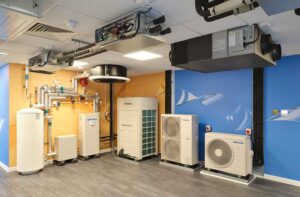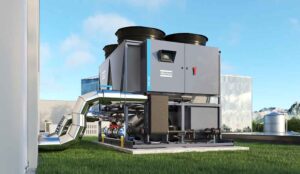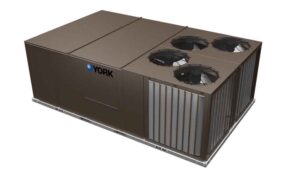Heat exchanger surface design could improve efficiency
18th July 2022
USA: Researchers at MIT claim to have found a way to improve the efficiency of systems with a specially tailored surface treatment for heat exchanger materials.
The research, which is currently still at a laboratory scale, involves a combination of three different kinds of surface modifications at different size scales. However, the researchers admit that more work is needed to develop a practical, industrial-scale process.
The new findings are described in the journal Advanced Materials in a paper by recent Massachusetts Institute of Technology graduate Youngsup Song, Ford professor of engineering Evelyn Wang and four others at MIT.
The boiling process is generally a trade-off between the heat transfer coefficient (HTC) and the critical heat flux (CHF).
While both parameters are important, enhancing both parameters together is difficult because they have intrinsic trade-offs. Song explains that the reason for that is that if there are lots of bubbles on the boiling surface, the boiling is very efficient, but if there are too many bubbles on the surface, they can coalesce together, which can form a vapour film over the boiling surface. That film introduces resistance to the heat transfer from the hot surface and lowers the CHF value.
Now, after years of work, the team is said to have achieved a way of significantly improving both properties at the same time, through their combination of different textures added to a material’s surface.
Song, who is now a postdoc at Lawrence Berkeley National Laboratory, carried out much of the research as part of his doctoral thesis work at MIT. While the various components of the new surface treatment he developed had been previously studied, the researchers say this work is the first to show that these methods could be combined to overcome the trade-off between the two competing parameters.
Adding a series of microscale cavities, or dents, to a surface is a way of controlling the way bubbles form on that surface, keeping them effectively pinned to the locations of the dents and preventing them from spreading out into a heat-resisting film.
The researchers created an array of 10μm-wide dents separated by about 2mm to prevent film formation. However, that separation also reduces the concentration of bubbles at the surface, which can reduce the boiling efficiency. To compensate for that, the team introduced a much smaller-scale surface treatment, creating tiny bumps and ridges at the nanometer scale, which increases the surface area and promotes the rate of evaporation under the bubbles.
In these experiments, the cavities were made in the centres of a series of pillars on the material’s surface. These pillars, combined with nanostructures, promote wicking of liquid from the base to their tops, and this enhances the boiling process by providing more surface area exposed to the water. In combination, the three “tiers” of the surface texture — the cavity separation, the posts, and the nanoscale texturing — provide a greatly enhanced efficiency for the boiling process, Song says.
Although their work has confirmed that the combination of these kinds of surface treatments can work and achieve the desired effects, this work was done under small-scale laboratory conditions that could not easily be scaled up to practical devices.
“Showing that we can control the surface in this way to get enhancement is a first step,” Evelyn Wang says. “Then the next step is to think about more scalable approaches.”
For example, though the pillars on the surface in these experiments were created using clean-room methods commonly used to produce semiconductor chips, there are said to be other, less demanding ways of creating such structures, such as electrodeposition. There are also a number of different ways to produce the surface nanostructure textures, some of which may be more easily scalable.
The team also included Carlos Diaz-Martin, Lenan Zhang, Hyeongyun Cha, and Yajing Zhao, all at MIT. The work was supported by the Advanced Research Projects Agency-Energy (ARPA-E), the Air Force Office of Scientific Research, and the Singapore-MIT Alliance for Research and Technology, and made use of the MIT.nano facilities.







